




Does it seem like your posts are missing the mark? Do you want to publish content that really resonates with your future customers?
In this article, you’ll learn how buyer personas can improve both paid and organic social marketing. Plus you’ll discover how to research, create, and implement ideal customer profiles for your business.
Also known as an audience persona, a buyer persona is a description of a person who fits your company’s definition of its target customer. It doesn’t represent one actual person. Instead, a buyer persona is based on a combination of the qualities, concerns, and questions of many of your best customers—or those you want to attract.
A buyer persona results from extensive market research and the details may differ based on your business type and goals. However, most include these elements:
Some companies with a narrow focus might have a single buyer persona. Others with a larger product line or a wider appeal may have a few. There’s no ideal number of personas. Instead, the right number depends on your unique business and goals.
Are buyer personas really that important? Here’s how they can benefit your organic and paid social media efforts and your influencer partnerships.
Let’s face it—if you don’t know who your customers are or what they care about, then your social media posts are likely to look generic or sound out of touch. For example, they might use slang or jargon your audience doesn’t understand. They might even position your business in a way that doesn’t appeal to your customers.
What does that mean for your business? The best-case scenario is your engagement won’t be great or your account could receive negative comments. Worst case, you could end up losing followers or falling short of your conversion goals.
With a well-defined buyer persona, however, you can create social media content that speaks to your audience and provides value. That means you can achieve measurable goals like increasing engagement, growing your audience, and even driving conversions.
For example, the @ZapierApp Facebook post below speaks to a pressing issue for the brand’s target audience: avoiding repetitive tasks. The copy and creative work together to offer a simple yet necessary solution: automating tasks to save time.

Using buyer personas can also help you save time on content creation and stop agonizing about what to post on social media. Naturally, when you have data about your audience’s questions, concerns, challenges, and goals at your fingertips, you can write and publish posts more efficiently.
Whether you’re running a one-off ad or building a complex funnel, audience research is critical for planning paid social campaigns. When it comes to ads, buyer personas can do much more than help you write great copy or design eye-catching creatives.
In fact, buyer personas can shape many of your audience segments. Do you want to reach people who fit one of your ideal customer profiles? Use your buyer personas to create interest-based audiences or use demographic data to fine-tune your custom audiences.
When you use audience research for ad targeting, you can reach more relevant social media users. That means you can get better outcomes and run more efficient paid social campaigns.
For example, the @Klaviyo Facebook ad below covers an entire list of its target audience’s primary goals. Using terms like “A/B testing” and “better subject lines,” this ad can effectively get the attention of the brand’s ideal customers.

Buyer personas let you do more than reach customers directly. You can also use audience research to find and connect with relevant influencers.
To identify potential partners for your brand, plug your customer demographics or audience interests into an influencer marketing platform. With this type of tool, you can easily locate influencers whose audiences align with yours.
Even if you take a more DIY approach and naturally form relationships with influencers via social media channels, you can confirm whether they’re a good fit for your brand. Ask influencers to share their audience demographics and interests so you can decide whether they’re ideal matches before moving forward with a partnership.
Now that you know why buyer personas are essential, here’s how to create your own personas and use them to improve your paid and organic social marketing.
When it comes to researching audience personas, using more sources lets you create a more complete picture of your ideal customer. Use as many of these methods as possible to develop the most insightful profile of your audience segments.
If your business already has at least one customer, then you have existing data to jump-start your audience research. Some of the most valuable sources of customer data include:
Next, take a look at your social media analytics. As long as your profile has a minimum number of followers (typically 100), you can access audience insights on most platforms. The biggest exception? Twitter no longer provides audience analytics, making it tough to use the platform for customer research.
To access Facebook Audience Insights, navigate to the Insights panel in Facebook Business Suiteor Business Manager. There you can see a breakdown of your followers’ age and gender, as well as the top 10 cities and countries. If you click the Potential Audience button, you can also see some of the pages people like your customers follow—which can give you insight into your audience’s interests.
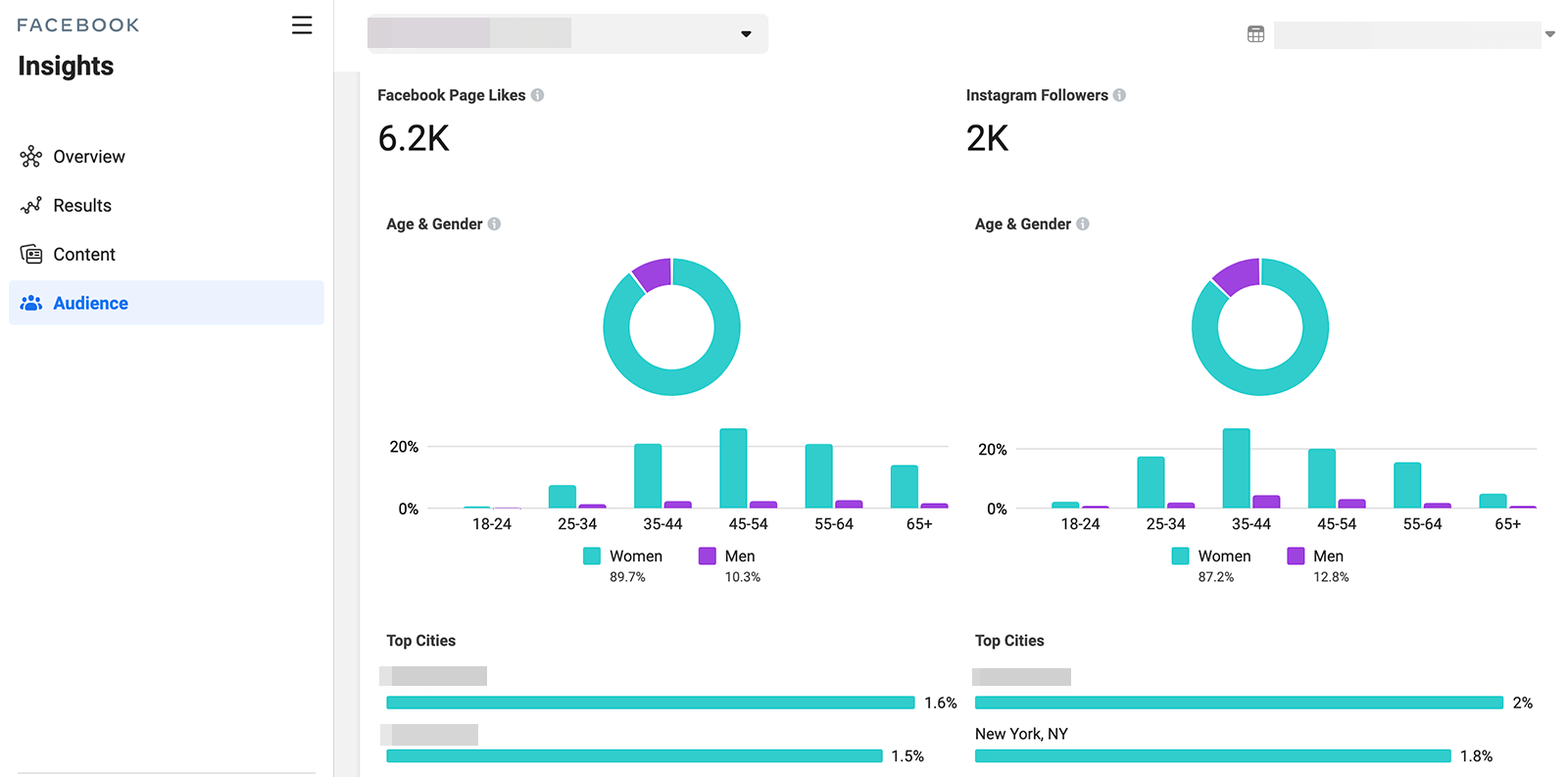
If you’ve linked your Facebook and Instagram pages, you can access insights for your Instagram audience in Business Manager. Whether or not you’ve linked the accounts, you can also view Instagram Insights in the mobile app. There you can see demographics like gender, age, and location.
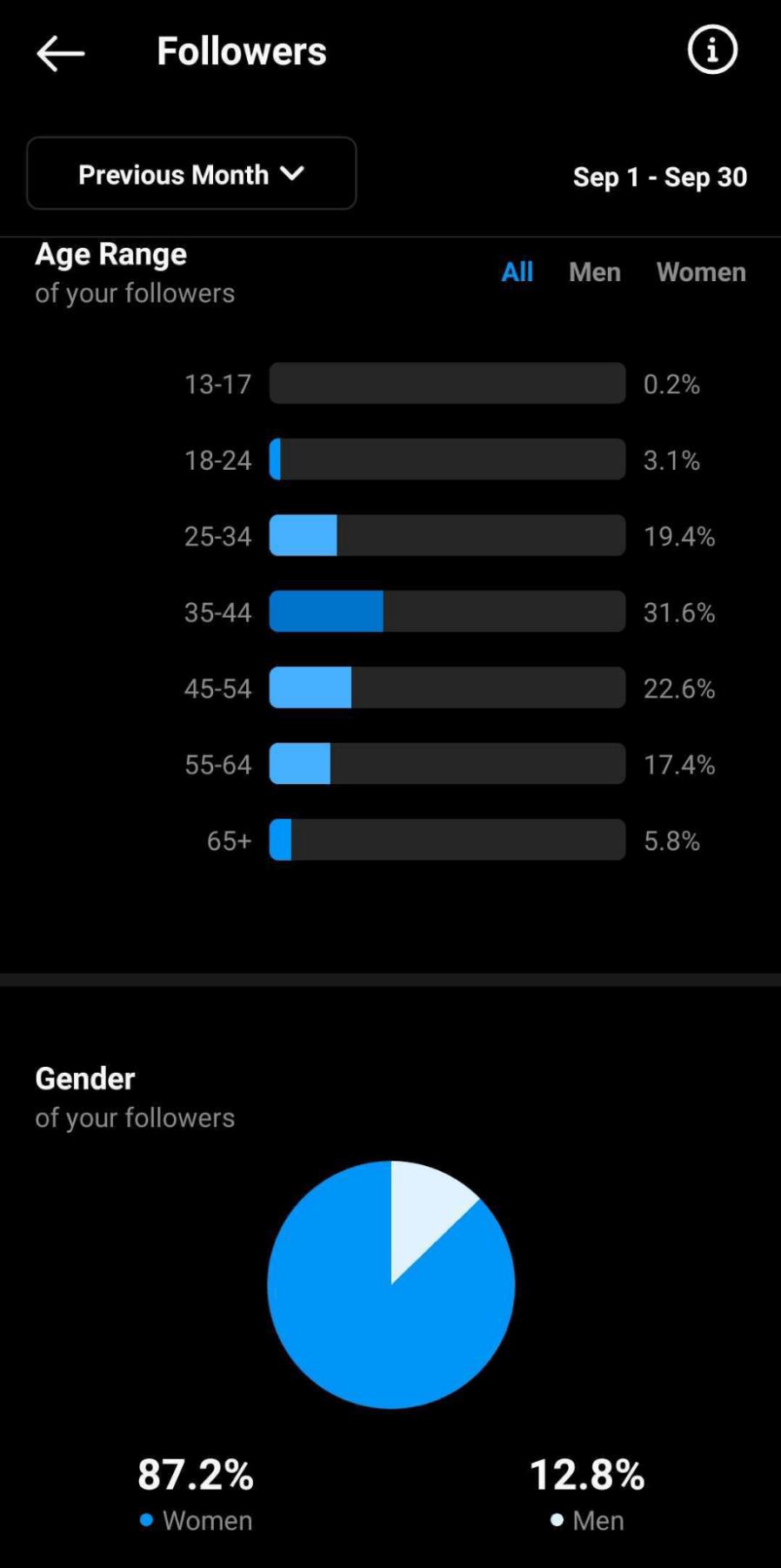
LinkedIn doesn’t provide age or gender analytics but it does provide data on your audience’s location, job function, seniority, industry, and company size. Even better, LinkedIn gives you this data for your followers and your company page visitors so you can do more thorough audience research.
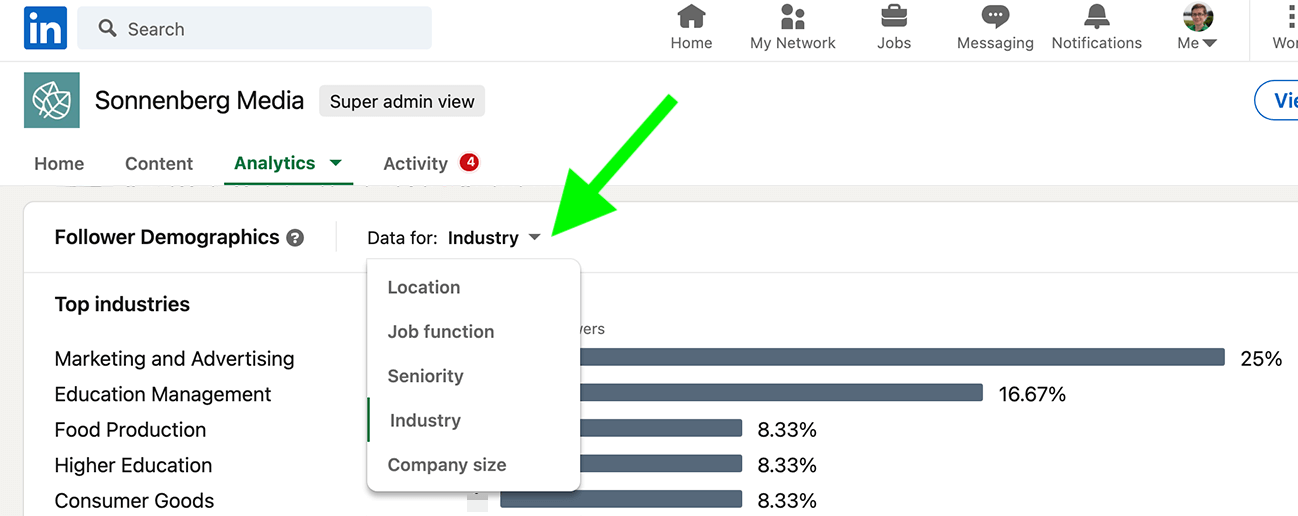
After sifting through your social media analytics, dig into your website analytics to learn even more about your audience. With free apps like Google Analytics, you can collect data that goes way beyond basic demographics. Here are a few examples of what you can learn from website analytics:

Google Analytics also allows you to divide your audience into segments. That means you can analyze data for current or returning customers separately to learn what characteristics define your most valuable website visitors.

By now, you’ve collected tons of information on your customers, social media followers, and website visitors. This data can help you build a solid foundation for your buyer personas but it probably won’t paint a complete picture.
That’s because the data you’ve gathered so far only reflects who your customers are or the actions they’ve taken. It doesn’t fully capture what they’re thinking, planning, or wondering. So how can you get that information? Ask customers directly.
If you don’t already ask questions in your social media posts, now is a great time to start. In your organic content, pose questions like:
Getting social media followers to comment on open-ended questions isn’t always easy. Fortunately, some social media channels let you create polls that provide multiple-choice answers. These interactive polls prompt engagement and guide answers so you can get standardized responses.
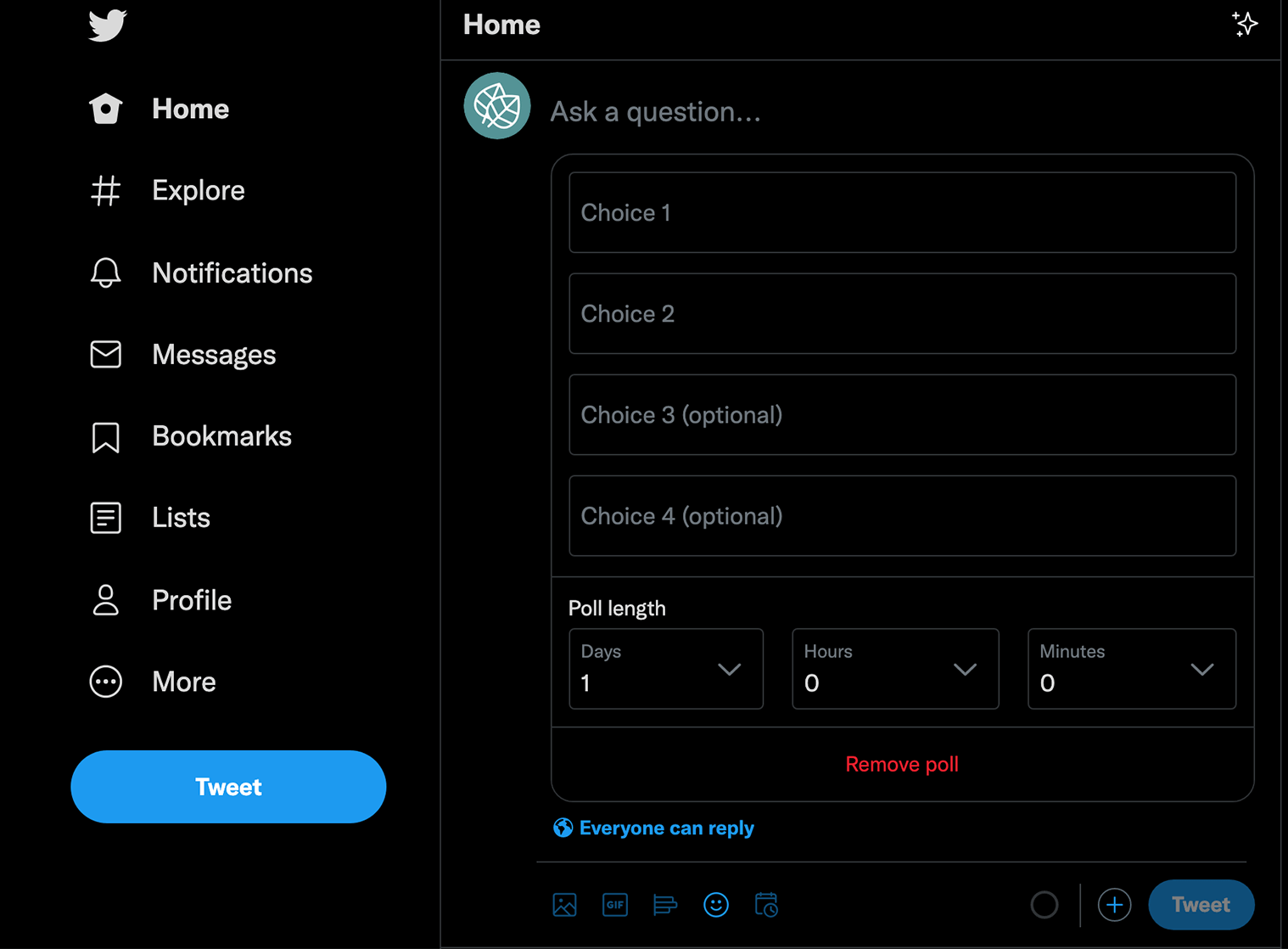
To create polls on platforms like LinkedIn or Twitter, go to your profile or company page. Then click the poll icon under the post creation options. Both platforms let you add up to four answers and modify the length of time for the poll.
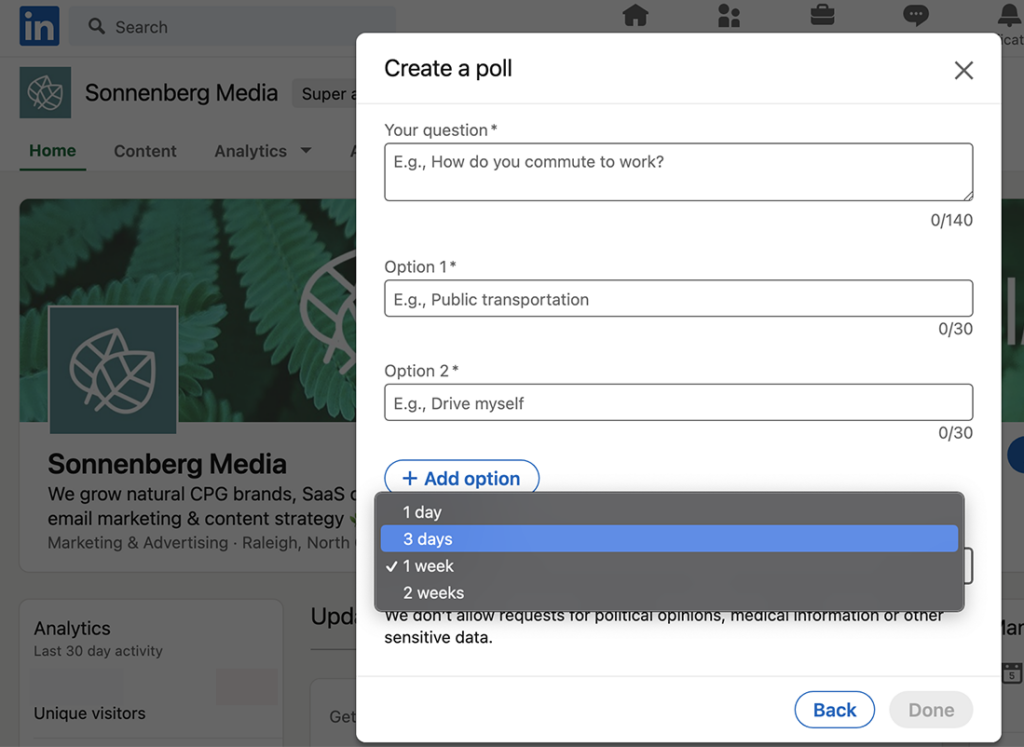
If your social media audience reflects a small percentage of your customer base, consider other methods of connecting. For example, you might create polls in your email newsletter or send follow-up questions to eCommerce customers after their purchases.
Asking key questions can help you learn more about where customers struggle and what they want to achieve. But just because you pose the right questions doesn’t mean you’ll necessarily get the answers you want. In some cases, your audience may hesitate to answer truthfully—or at all.
To get insight into what your audience is really thinking, do keyword research. Free tools like Google Search Console can show you some of the search terms people use to find your website. While some search terms may be single words or short phrases, others may be questions. Either way, they can help you understand what’s on your customers’ minds.
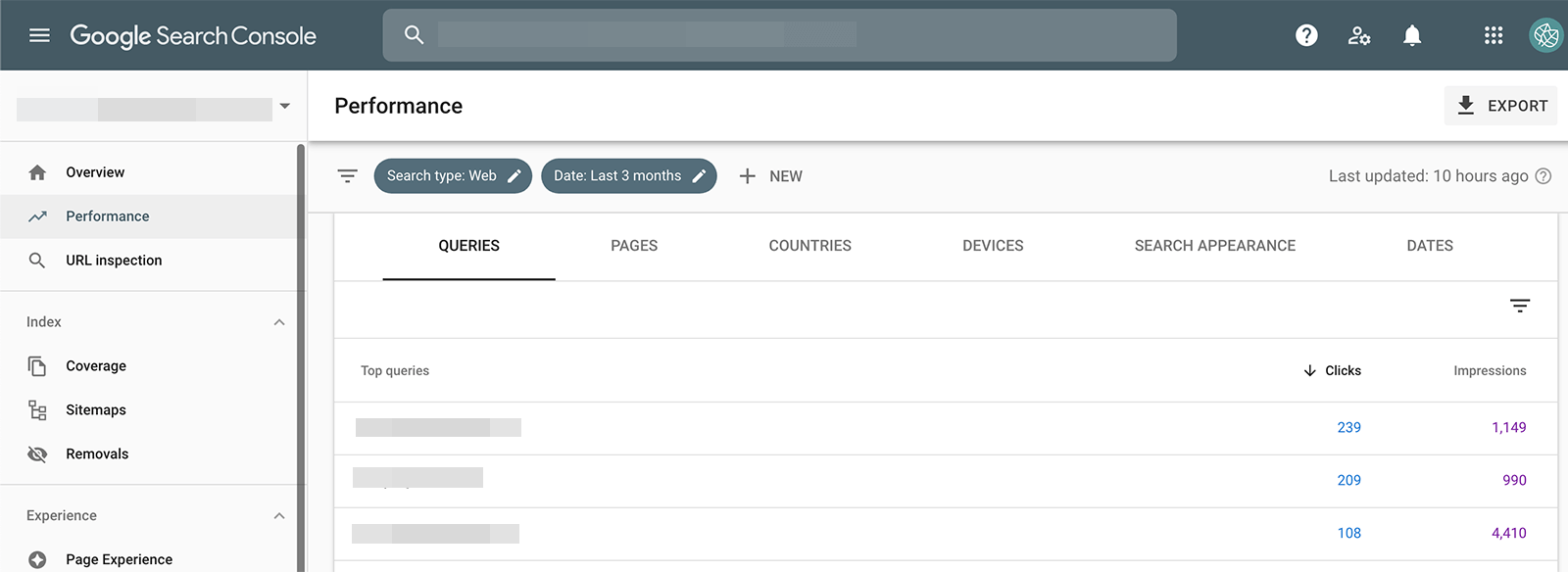
Paid tools like Moz can also give you insight into the keywords that drive the most traffic to your website. This type of search engine optimization (SEO) tool also provides competitive research, showing you what your competitors rank for to give you even more data to build your buyer personas.

Now that you’ve done the research, it’s time to put your audience personas to work. Use these best practices to get the most from your data.
Organize your research into a single document for each distinct persona. Start by giving it a memorable name that reflects its role. To make personas easier to remember and identify with, brands often give them images and alliterative names—such as CEO Cecilia.
For each persona, list the basic demographics, including gender, age, and location. Depending on the data you’ve gathered, you can also list information like relationship status, professional field, seniority level, or even employer.
Next, list the interests and shopping patterns for each persona. What are they in the market for and what do they like or dislike? Then summarize each persona’s biggest challenges and pain points. Explain their potential objections and their overall goals.
Finally, summarize how your business can help or serve each type of customer. If your business has multiple personas, complete these steps as many times as necessary.
Not everyone is the ideal customer for your company. As you create buyer personas, consider defining a negative profile that sums up the characteristics and challenges your business doesn’t deal with or can’t serve.
Taking this step can save your team time in the long run. Creating a negative persona can help your team avoid speaking to needs and interests your customers don’t have and can provide an extra checkpoint for your content creation workflow.
Once you define your buyer personas, you can use the data to build or update core audience segments for paid social campaigns. During the campaign creation process, you can also add select demographic data to custom and lookalike audiences to reach more relevant social media users.

When you create paid or organic social media content, add your buyer personas into the workflow. You can use them to brainstorm and shape the content you create. Then you can check posts against your personas before publishing.
As you develop and review content, think about each post or ad from a persona-focused perspective. For example, does CEO Cecilia struggle with the challenges your content mentions? How would CEO Cecilia respond to the solution your video mentions?
If you’re creating content for multiple personas, label each post to clarify your targeting. That way, you can monitor how often you reach out to each audience segment and strike the ideal balance for your business. Later, you can compare the results from each persona’s content to identify the most valuable customers for your business.
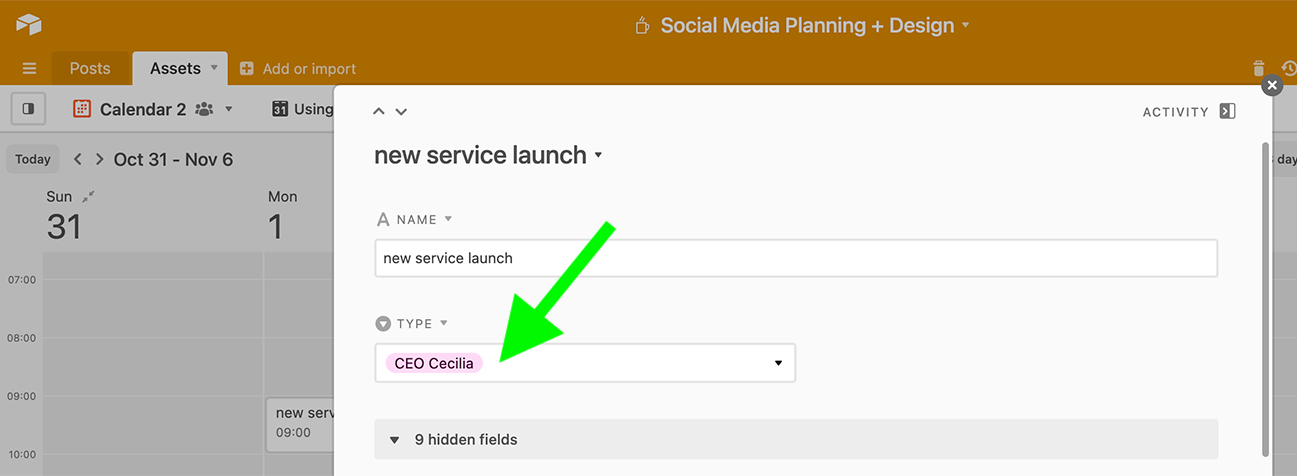
Researching buyer personas for your business requires time, tools, and teamwork. But once you do the preliminary work, you’ll have a valuable tool you can use to create more compelling content, improve ad performance, and communicate with your audience more effectively—which can help you reach even bigger business goals.



Simply provide your email and we will contact you to get your free website.